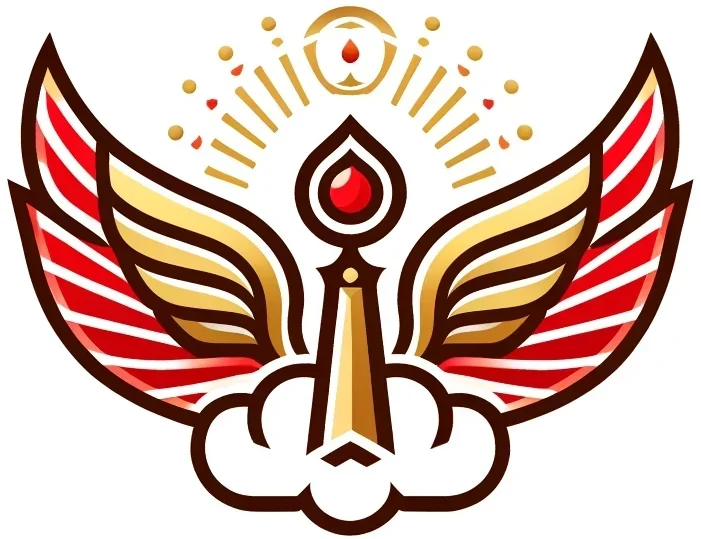Zoroastrianism, one of the world’s oldest religions, offers profound insights into human consciousness and the spiritual journey. Dreams, often seen as a bridge between the physical and spiritual realms, hold a special place in Zoroastrian teachings. This article explores the metaphors found in Zoroastrian texts and practices, offering a foundation for interpreting dreams and using them as tools for self-discovery. While this is only a starting point, the depth of Zoroastrian wisdom ensures there is always more to uncover.
Dreams in Zoroastrianism
In Zoroastrian cosmology, dreams are viewed as sacred experiences where the soul interacts with spiritual realities. Dreams often reflect the duality of existence, the ongoing cosmic struggle between Asha (truth and order) and Druj (falsehood and chaos). Through dreams, divine forces can inspire and guide, while disruptive forces challenge and test the dreamer.
The Avesta and Pahlavi texts emphasize that dreams can serve as messengers, offering guidance or exposing areas of inner conflict. According to Zoroastrian belief, dreams are not random but deeply connected to one’s moral and spiritual state. They provide an opportunity to reflect on personal alignment with Asha, Ahura Mazda’s divine order.
As described in the Pahlavi texts:
“The soul, though asleep, journeys in truth or in deceit, as the fire seeks its source.”
This passage illustrates how dreams, much like waking life, reveal the soul’s path toward enlightenment or its entanglement in falsehood.
Zoroastrian Metaphors in Dreams
Light and Fire
In Zoroastrianism, light and fire are sacred, symbolizing Ahura Mazda’s divine essence and the illumination of truth. Dreams featuring light or fire often signify spiritual awakening, purification, or a call to align with higher principles.
- A steady, glowing fire may reflect inner strength or clarity, while a flickering or extinguished flame might indicate doubt or a wavering connection to truth.
The Battle of Asha and Druj
Conflict in dreams often mirrors the cosmic struggle between Asha and Druj. Dreams of battles or unresolved tensions can reveal internal struggles between truth and deception.
- Resolution of such conflicts in dreams may suggest personal growth or moral progress, while unresolved struggles could indicate areas requiring introspection and action.
The Faravahar
The Faravahar, a symbol of divine guidance and the human journey toward spiritual perfection, often appears in Zoroastrian imagery. Dreams of winged figures or protective symbols may represent spiritual support or the need to focus on higher aspirations.
Bridges and Pathways
Bridges, such as the Chinvat Bridge, represent transitions between the material and spiritual realms. Dreams involving bridges may symbolize moments of change or personal growth, often pointing to decisions that have moral or spiritual consequences.
Sacred Elements
The elements of earth, water, air, and fire hold sacred significance in Zoroastrianism. Dreams involving these elements often reflect balance or imbalance in life.
- Clear water might symbolize emotional peace and clarity, while turbulent water could indicate unresolved emotional struggles. Dreams of fire, beyond their purifying symbolism, may suggest the need to confront hidden fears or embrace transformation.
Practical Applications for Self-Discovery
Dream Journaling
Recording dreams and reflecting on recurring symbols can help uncover deeper patterns. By applying Zoroastrian metaphors, such as light, fire, or the Chinvat Bridge, dreamers can connect their subconscious experiences to spiritual lessons.
Meditation and Visualization
Meditating on light or fire can enhance clarity and spiritual alignment. After waking from a dream, focusing on these symbols can guide the interpretation and help integrate lessons into daily life.
Recognizing Duality
Dreams often highlight the duality of Asha and Druj. Identifying which parts of a dream reflect truth and which represent chaos can illuminate areas of personal growth or challenges that need attention.
Harmonizing with the Elements
Interpreting dreams through the lens of sacred elements offers practical insights. For example, turbulent dreams involving water may inspire efforts to address emotional imbalances, while dreams of earth might encourage grounding practices.
The Significance of Zoroastrian Dream Interpretation Today
Zoroastrian metaphors in dream interpretation provide a spiritual framework for modern self-discovery. In a world that often prioritizes the material over the spiritual, these timeless teachings encourage reflection, growth, and alignment with universal truths. Dreams, when viewed through the lens of Zoroastrian wisdom, become more than fleeting images—they become mirrors of the soul, offering guidance for both the inner and outer journey.
This exploration is only a beginning. The wisdom of Zoroastrianism extends far beyond what can be captured in a single article. Each dream, each metaphor, and each interpretation opens the door to deeper truths, inviting us to continue the journey toward understanding and self-realization.
References
- Boyce, M. (1979). Zoroastrians: Their Religious Beliefs and Practices. Routledge.
- Jackson, A. V. W. (1899). Zoroastrian Studies: The Iranian Religion and its Contributions to Civilization. Columbia University Press.
- Insler, S. (1975). The Gathas of Zarathustra. Brill Academic Publishers.
- Hawley, J. (1987). Dreams and Symbolism in the Ancient Near East. Princeton University Press.
- Yasna 31: Zarathustra’s Hymns on the Nature of Truth and Lies.
- Russell, J. (1993). Zoroastrianism in Armenia: Dreams, Myths, and Metaphors.
- Pahlavi Texts: Translations and Interpretations (1892). E. W. West.
- Avesta.org: Online Repository of Zoroastrian Texts and Interpretations.
